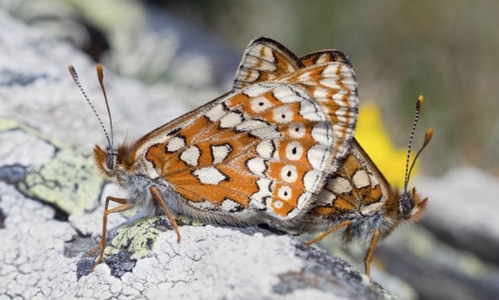Strange school teaches students to attract bees and butterflies to the garden
Learning about life cycles and promoting biodiversity is a real-life lesson in school gardens across the UK.
After a cold winter, pupils at Evelyn Community Primary School in Merseyside, England, headed outside to count and record the number of different bird species in the school grounds. The challenge was part of the Birdwatching programme, an event that attracted 73,000 pupils and teachers last year.
According toGuardian, the children have been interested in wildlife at school for a long time. Since a garden was created in an open space on the school grounds two years ago, the birds have been coming more and more. The children plant wildflower seeds, build bird nests, and learn about biodiversity. The school has an observation point where children can use binoculars to search for and monitor birds all year round.
Principal Carole Arnold said children play an important role in biodiversity at the school. Each week, a group of 12 children spend time in the garden, then a new group takes their turn.
“It really gives children a love of nature. With this garden, we want to help vulnerable children and children who sometimes need to calm down,” she said.
|
The endangered Marsh Fritillary butterfly has returned to the area thanks to the prompt action of a group of schoolchildren in north Wales. Photo: Alamy |
The number of schools using gardens and the natural world to teach continues to grow in the UK. The School Gardens Campaign, a programme run by the Royal Horticultural Society (RHS), now has 20,000 member schools, 81% of which plant to attract birds and insects.
“In urban areas, children don’t understand life cycles, or can’t connect what they see in their gardens to what they buy in supermarkets. We’re encouraging schools to create a network of wildflower habitats and meadows so insects can travel across the UK. Pupils need to understand that the small things they do in their gardens can have a big impact on the natural environment,” said Alana Cama, campaign manager.
Students in North Wales were given another way to learn about the connection between the natural environment and life cycles. After a fishing club noticed a decline in salmon numbers in local rivers, children at Esgob Morgan Primary School helped care for some eggs in a holding tank before releasing them back into the river. They also planted wildflowers along the riverbanks in the city.
The school established an eco-zone and held annual bird, bee and butterfly surveys. Students researched the role of hedgerows in promoting biodiversity in the school and made plans to protect and develop them in the future.
It’s a topic that some people think is too complicated for young children, but fifth-grade teacher Richard Atwood doesn’t think so. “I tell them we’re going to give the school garden as much opportunity as possible for life to thrive. Just by planting a different tree or putting a different kind of bird feeder there, you’re going to attract different species to nest there,” he says.
Atwood added that the garden is growing rapidly, thanks to the children’s efforts. “Some of them have never had a garden or a pond. They have never seen anything like it before. It gives them the experience to live and learn through nature,” said the teacher, who has worked at the school for nine years.
High schools can struggle to incorporate this into their curriculum, Cama admits, especially after Year 9, when students are focused on exams. “Obviously high schools don’t have a lot of time or space for this. Many schools are using their campuses to build new buildings. We always try to advise them not to overdo it, or at least to have some environmental activities,” Cama says.
The winner of the 2017 RHS Green Plan challenge for Wales and the South West was a group of pupils from Y Pant Secondary School, who designed a wildflower meadow to attract the endangered Marsh Fritillary butterfly. The idea came after they realised that new developments at the school had removed some of its habitat.
“The students have been researching what butterflies need and what will attract them back,” explains biology teacher Felicity Braund. Working with an environmentalist from Bridgend College, plans are being drawn up to develop the land into a wetland with the blue-purple Devil’s-bit Scabious wildflowers that the butterflies like to lay their eggs on.
“Although I supported them, they took it upon themselves and were really interested. Students are increasingly interested in environmental topics. They know that their future depends on protecting the world around us,” the teacher said proudly.

